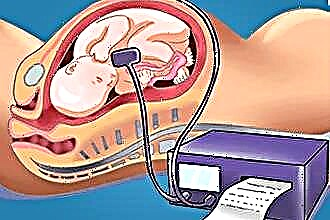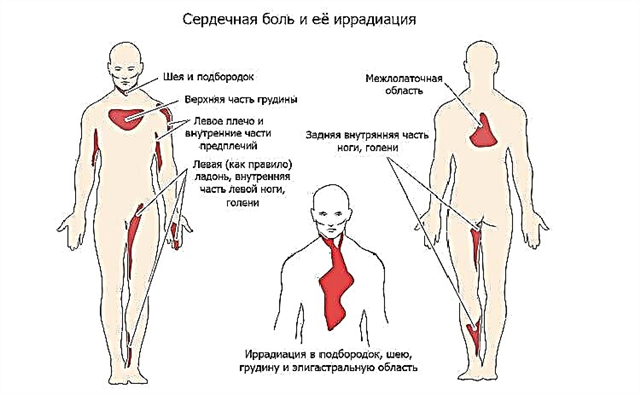 In this regard, many parents have a reasonable question: is it possible to walk with a child with a cough and a runny nose? According to most pediatricians, air baths are one of the most effective ways to treat respiratory problems. During walks, the mucus in the bronchi and nasal cavity liquefies, due to which the airways are cleared of phlegm, pathogens, allergens, etc.
In this regard, many parents have a reasonable question: is it possible to walk with a child with a cough and a runny nose? According to most pediatricians, air baths are one of the most effective ways to treat respiratory problems. During walks, the mucus in the bronchi and nasal cavity liquefies, due to which the airways are cleared of phlegm, pathogens, allergens, etc.
But in order not to harm the child's body, while walking, you need to take into account several important nuances that will be discussed in today's publication.
The benefits of air baths
Walking in the fresh air can be attributed to a separate type of physiotherapy treatment, which is called aerotherapy. Dosed exposure to fresh air has a beneficial effect on health and accelerates the regression of inflammatory processes in the respiratory tract. The systematic use of aerotherapy contributes to a number of processes, which will be discussed below.
Enhanced tissue oxygenation
Walking in the fresh air normalizes gas exchange in tissues, which has a beneficial effect on the rate of metabolic reactions. As a consequence, this leads to an increase in the reactivity of the mucous membranes in the lesions and the suppression of the activity of viruses and bacteria in the respiratory tract. If you take children for a walk for at least 30-40 minutes a day, in the long term this will lead to a strengthening of the immune system and a decrease in the risk of developing respiratory diseases.
Recovery of sputum discharge
The mucociliary apparatus consists of goblet cells, which produce mucus, and cilia, which are located on the inner surface of the bronchi, trachea and nasal mucosa. During inflammation of the respiratory tract, an excessive amount of viscous sputum is formed in the mucous membrane, which practically does not separate from the walls of the bronchi, trachea and nasal canals. Regular walks in the fresh air help to loosen mucus and move it along the respiratory tract. Due to this, the unproductive cough becomes moist, as a result of which sputum is quickly evacuated from the respiratory system.
Reducing airway swelling
Walking outside in sub-zero temperatures is not only possible, but also very useful for the child. According to experts, with a decrease in temperature in the environment, reflex vasoconstriction occurs. Due to this, the density of the walls of the blood capillaries increases and, as a result, the swelling in the airways decreases. In other words, frosty air acts in about the same way as vasoconstrictor drops, but at the same time it does not cause side reactions in a small child.
Winter walks
It is quite difficult to achieve the required air humidity in a closed room, and it is moisture that stimulates the liquefaction of mucus in the respiratory tract. Therefore, doctors recommend regularly ventilating the room and using special humidifiers during the treatment of children. Moreover, frosty air helps to reduce swelling in the nasal passages and, accordingly, to facilitate nasal breathing.
In order not to provoke hypothermia in the child's body, the following nuances should be taken into account during walks:
- newborns and infants can only take air baths if the air temperature does not drop below -5 ° C;
- the time for walking in the fresh air should be increased gradually, starting from 15-20 minutes a day;
- before going outside, the child needs to be warmly dressed and a scarf tied around his neck to prevent hypothermia of the throat;
- It is advisable to take walks in calm weather at least 2 times a day for 20-30 minutes.
Important! Children with subfebrile and febrile fever should not go outside.
Hyperthermia is almost the only contraindication to outdoor walks. The fact is that a sharp decrease in body temperature stimulates the development of infectious agents in the respiratory tract, which can cause complications.
Summer walks
Regular walks in the fresh air can help cure coughs and relieve nasal congestion. During sunbathing and air bathing, the body synthesizes vitamin D, which takes part in many biochemical processes. In addition, solar radiation has a bactericidal effect and contributes to the destruction of microbial flora in the respiratory tract.
But in order to achieve the maximum therapeutic effect from walking in the summer, it is advisable to pay attention to the following points:
- walking is best in the morning, immediately after rain and in the evening;
- before going outside, it is necessary to relieve the child's nasal breathing with the help of nasal drops;
- it is undesirable for children prone to allergies to walk during the flowering period of wind-pollinated plants;
- it is best to dress your child in things made from natural fabrics that "breathe" and prevent sweating.
If your child has recently had bronchitis, walking in dry weather can only make them feel worse. Inhalation of dust leads to irritation of the cough receptors and, as a result, a spastic cough. That is why doctors recommend taking air baths after rain, when the air humidity is high enough and there is practically no dust in it.
Recommendations of doctors
The pronounced immunostimulating and expectorant effect of air baths is associated with high air humidity. When air is inhaled, moisture condenses on the inner surface of the larynx and nasal cavity. Subsequently, this leads to liquefaction and excretion of phlegm from the respiratory tract.
During a walk, the child may cough due to the thinning of mucus in the airways.
Upon returning home, many parents note some deterioration in the well-being of the baby. As a rule, after a walk in children, the separation of nasal mucus increases and, as a result, coughing. This is due to the dilution of sputum and its evacuation from the airways. This process is quite natural, so do not panic and immediately take the child to a pediatrician for examination.
To reduce the likelihood of a deterioration in the child's well-being to a minimum, the following rules must be observed during aerotherapy:
- do not take the child out for a walk in rainy and windy weather - hypothermia leads to a decrease in immunity and the intensive development of infection in the ENT organs;
- in the presence of a severe rhinitis, the duration of aerotherapy should not exceed 3-40 minutes - increased secretion of nasal mucus will lead to blockage of the nasal passages,
- as a result of which the child will begin to breathe through the mouth; do not dress your child too warmly - if you sweat, the child may become hypothermic, and this can lead to the development of complications.
In addition, doctors categorically do not recommend taking air baths for:
- subfebrile fever;
- malaise and nausea;
- headaches;
- chills or fever.
Aerotherapy will be useful only at the stage of resolving inflammatory processes in the respiratory organs. During the period of acute acute respiratory viral infections, it is not worth taking walks in the fresh air.Physical activity takes away from the child the strength that the body needs to fight infection. As a rule, the acute phase of respiratory diseases lasts no more than 2-3 days, after which the baby's condition improves significantly.
Rhinitis and cough pester the child for 4-5 days after the inflammation in the airways begins to regress. It is during this period that pediatricians recommend taking half-hour walks in the fresh air, which stimulate the excretion of mucus and, as a result, improve the well-being of the little patient.



